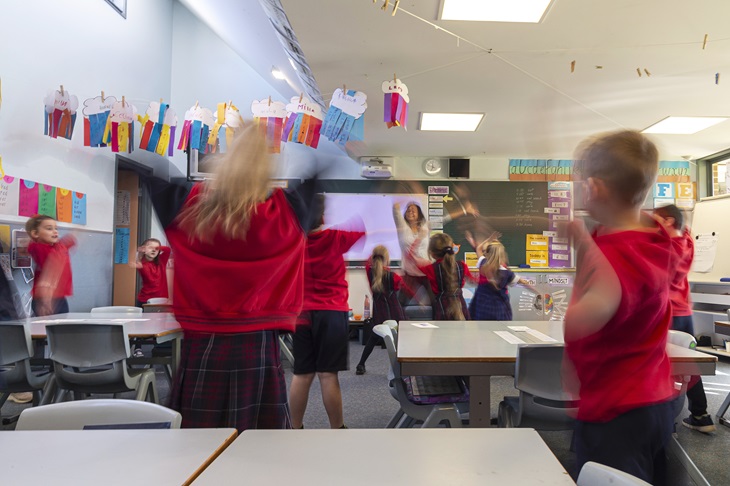
MELBOURNE, AUSTRALIA - MAY 26: Performing arts class at Lysterfield Primary School on May 26, 2020 in Melbourne, Australia. Students from prep to year two and years 11 and 12 are returning to classrooms across Victoria from today, with years three to 10 returning on June 10. Victorian schools closed on March 25 to help stop the spread of COVID-19. (Photo by Daniel Pockett/Getty Images)
UPDATE: Record numbers of teachers are leaving the profession in Australia, raising urgent concerns about the quality of teacher training and support. Western Australia’s Education Minister, Sabine Winton, attributed this alarming trend to younger teachers being “fussier,” but experts are highlighting systemic issues that demand immediate attention.
Recent studies reveal a shocking reality: up to 50% of new teachers abandon the classroom within five years of graduation. Reports from the Mannkal Economic Education Foundation underscore that the exodus is driven not by the attitudes of younger educators, but by failures in teacher training and insufficient preparation for classroom challenges.
The situation is dire. Between 10-20% of education graduates never set foot in a classroom. This is alarming, especially as parents entrust their children to teachers with high expectations. The emotional toll on teachers, who often feel overwhelmed and unsupported, is contributing significantly to early departures from the profession.
A lack of foundational skills is evident in the results of the Literacy and Numeracy Test for Initial Teacher Education Students (LANTITE), where many education students struggle to meet basic requirements. Recent figures show that about 10% of prospective teachers failed the test, while 84% passed both components on the first attempt. However, for others, repeated failures mean that up to 91% do not meet the necessary standards.
The Education Minister’s claims about younger teachers’ fussiness contrast sharply with the realities faced by new educators. Former Education Minister Alan Tudge noted that graduates across Australia often feel unprepared to teach effectively. In stark contrast, countries like Singapore rigorously train their teaching recruits, ensuring they are classroom-ready from day one.
Compounding the issue, data shows a troubling trend: between 2006 and 2015, the number of education students with below-average ATARs soared from 25% to 42%. Some universities are admitting students with ATARs as low as 0-19, driven by financial incentives rather than academic readiness. These low-achieving students face daunting challenges, with federal data from 2021 indicating that over 7,000 sub-50 ATAR students were accepted nationwide, many expected to fail their degrees.
The education sector is now grappling with a high dropout rate, linked directly to low entry standards. Universities that accept lower caliber students see the highest attrition, leading to a cycle of underprepared teachers entering the workforce. As these teachers face high-stakes environments without the necessary skills, many are choosing to leave the profession.
The implications of this crisis extend far beyond individual classrooms. The future of Australia’s education system is at stake as both younger and older teachers exit, citing impossible conditions and inadequate support.
To address these systemic problems, experts are calling for an urgent overhaul of teacher training programs. The goal is clear: ensure that graduates are genuinely classroom-ready. Without immediate action, the current trends threaten not only the quality of education but also the trust parents place in the system.
The time for change is NOW. As the crisis unfolds, stakeholders must come together to restore excellence and confidence in Australia’s educational landscape.






